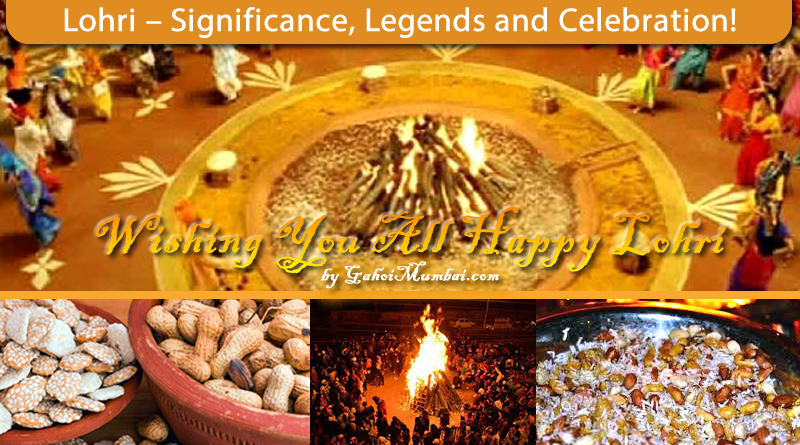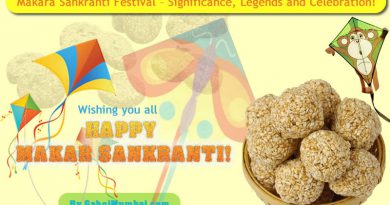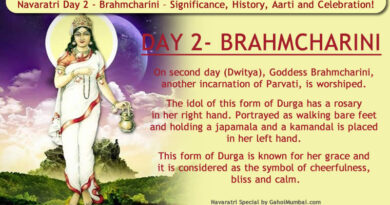Lohri – Significance, Legends and Celebration!
Lohri is an annual popular winter Punjabi folk festival which is celebrated on the occasion of the arrival of longer days after the winter solstice. Generally, it is celebrated by Hindus and Sikhs from the Punjab region in the northern part of the Indian subcontinent, celebrated on 13 January of every year. Lohri is an official restricted holiday in the state of Punjab, India, Haryana and NCT of Delhi in Indian subcontinent.
Celebration Time and Date of Lohri:
Lohri indicates the end of winter season, and is a customary welcome of longer days and sun’s journey to the northern hemisphere by Sikhs and Hindus in the India. Generally, it is observed the night before Makar Sankranti (Maghi), and according to the solar part of the lunisolar Bikrami calendar and typically falls about the same date every year (January 13). In most years it falls around 13 January of the Gregorian calendar. Normally, it is celebrated in the evening/night time.
The Significance and Legends of Lohri:
As per the legends, in early times Lohri was celebrated at the end of the traditional month when winter solstice occurs. It celebrates the days getting longer as the sun proceeds on its northward journey. The day after Lohri is celebrated as Makar Sankranti or Maghi Sangrand.
As per ancient traditions, it is the festival of both as a winter crop season celebration and a remembrance of the Sun deity (Surya). Lohri songs reference the Indian Sun god asking for heat and thanking him for his return.
As per another legend, it is the celebration as a folk worship for fire (Agni) or the goddess of Lohri.
As per another ancient legend, Lohri links with the tale of Dulla Bhatti. The main theme of various Lohri songs is the folktale of Dulla Bhatti and lived in Punjab during the reign of Mughal Emperor Akbar. He was regarded as a hero in Punjab, for rescuing Hindu girls from being forcibly taken to be sold in slave market of the Middle East. Amongst those he saved were two girls Sundri & Mundri, who progressively became a part of Punjab’ folk tales. As a part of Lohri celebrations, children go around homes singing the traditional folk songs of Lohri with “Dulla Bhatti” name included. One person sings, while others end each line with a loud “Ho!” sung in unison. After the song ends, the adult of the home is expected to give snacks and money to the singing troupe of youngsters.
As per legend, Lohri has derived its name from Loi, the wife of Saint Kabir. There is a tale amongst some people that Lohri comes from the word ‘loh’, which means the light and the warmness of fire. Lohri is also called lohi in rural Punjab.
As per another legend, Holika and Lohri were sisters. While the former perished in the Holi fire, the latter survived with Prahlad. Eating of til (sesame seeds) and rorhi is considered to be essential on Lohri day. Perhaps the words til and rorhi merged to become tilorhi, which finally got shortened to Lohri.
Celebrations of Lohri:
Lohri rituals are performed, with the accompaniment of special Lohri songs.
Singing and dancing form an intrinsic part of the celebrations. People wear their brightest clothes and come to dance the bhangra and gidda to the beat of the dhol. Punjabi songs are sung, and everybody rejoices.
Traditionally, Hindus lit bonfires in their yards after the weeks of the Rabi season cropping work, partied around the fire, sang and danced together as they marked the end of winter and the onset of longer days. After the night of bonfire celebrations, Hindus would mark Makar Sankranti and go to a sacred water body such as a river or lake to bathe.
Holy festival Lohri is celebrated with a bonfire. The lighting of bonfire during this winter festival is an ancient tradition.
In several places of the north regions specially Punjab, about 10 to 15 days before Lohri, groups of young and teenage boys and girls go around the neighbourhood collecting logs for the Lohri bonfire. In some places, they also collect items such as grains and jaggery which are sold and the sale proceeds are divided amongst the group.
A famous activity engaged in by boys is to select a group member to smear his face with ash and tie a rope around his waist. The idea is for the selected person to act as a warning for people who refrain from giving Lohri items. The boys will sing Lohri songs asking for Lohri items. If not enough is given, the householder will be given an ultimatum to either give more or the rope will be loosened. If not enough is given, then the boy who has his face smeared will try to enter the house and smash clay pots or the clay stove.
During the day, children go from door to door singing folk songs. These children are given sweets and savouries, and sometimes, money. Turning them back empty-handed is considered inauspicious.
The items gathered by the children are known as Lohri and comprise of til, gachchak, crystal sugar, gur (jaggery), moongphali (peanuts) and phuliya or popcorn. Lohri is then distributed at night during the festival. Till, peanuts, popcorn and other food items are also thrown into the fire. For some, throwing food into the fire signifies the burning of the old year and start the next year on Makar Sankranti.
The bonfire ceremony differs depending on the location in Punjab. In some parts, a small image of the folk Lohri goddess is made with gobar (cattle dung) beautifying it, kindling a fire beneath it and chanting its praises.
The bonfire is ignited at sunset in the main village square. People toss sesame seeds, gur, sugar-candy and rewaries on the bonfire, sit around it, sing and dance till the fire dies out. Some people perform a prayer and go around the fire. This is to show respect to the natural element of fire, a tradition common in winter solstice celebrations. It is customary to offer guests til, gachchak, gur, moongphali (peanuts) and phuliya or popcorn. Milk and water is also poured around the bonfire by Hindus to thank the Sun God and seeking his continued protection.
Traditional Cuisine and food for Lohri:
Generally, it is celebrated by eating January harvesting food or crop items as roasted corns, sugarcane, gurh (jaggery), gachak, chikki, gajak, ground nuts, radish, mustard green, sesame seeds etc. It is also traditional to eat “til rice” which is made by mixing jaggery, sesame seeds and rice. In some places, this dish is called ‘Tricholi’. Sarson da saag and makki di roti is usually served as the main course at a Lohri dinner.
Lohri songs:
Among the many songs, one song which has words to express gratitude to Dulla Bhatti as follows:
Sunder mundriye ho!
Tera kaun vicharaa ho!
Dullah Bhatti walla ho!
Dullhe di dhee vyayae ho!
Ser shakkar payee ho!
Kudi da laal pathaka ho!
Kudi da saalu paata ho!
Salu kaun samete!
Chacha gali dese!
Chache choori kutti! zamidara lutti!
Zamindaar sudhaye!
Bum Bum bhole aaye!
Ek bhola reh gaya!
Sipahee far ke lai gaya!
Sipahee ne mari itt!
Bhaanvey ro te bhaanvey pitt!
Sanoo de de Lohri, te teri jeeve jodi!
(Laugh, cry or howl!)
Meaning of this song:
Beautiful girl
Who will think about you
Dulla of the Bhatti clan will
Dulla’s daughter got married
He gave one ser of sugar!
The girl is wearing a red suit!
But her shawl is torn!
Who will stitch her shawl?!
The uncle made choori!
The landlords looted it!Landlords are beaten up!
Lots of simple-headed boys came!
One simpleton got left behind!
The soldier arrested him!
The soldier hit him with a brick!
(Cry or howl)!
Give us Lohri, long live your pair (to a married couple)!
Whether you cry, or bang your head later!
We wish all Lohri and joyful New Year ahead.




